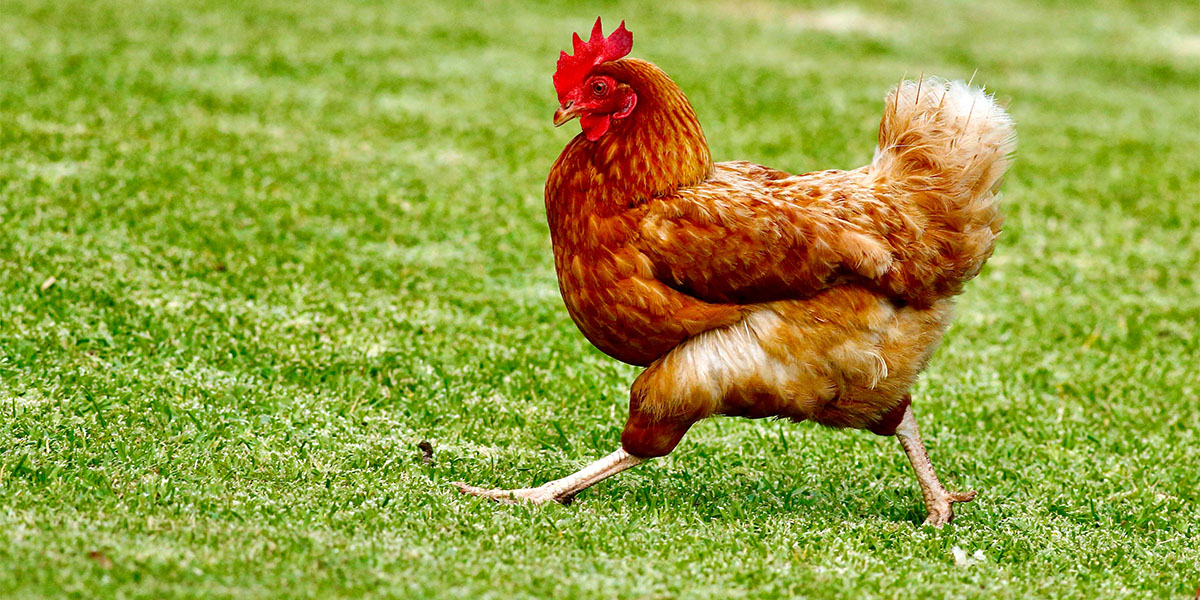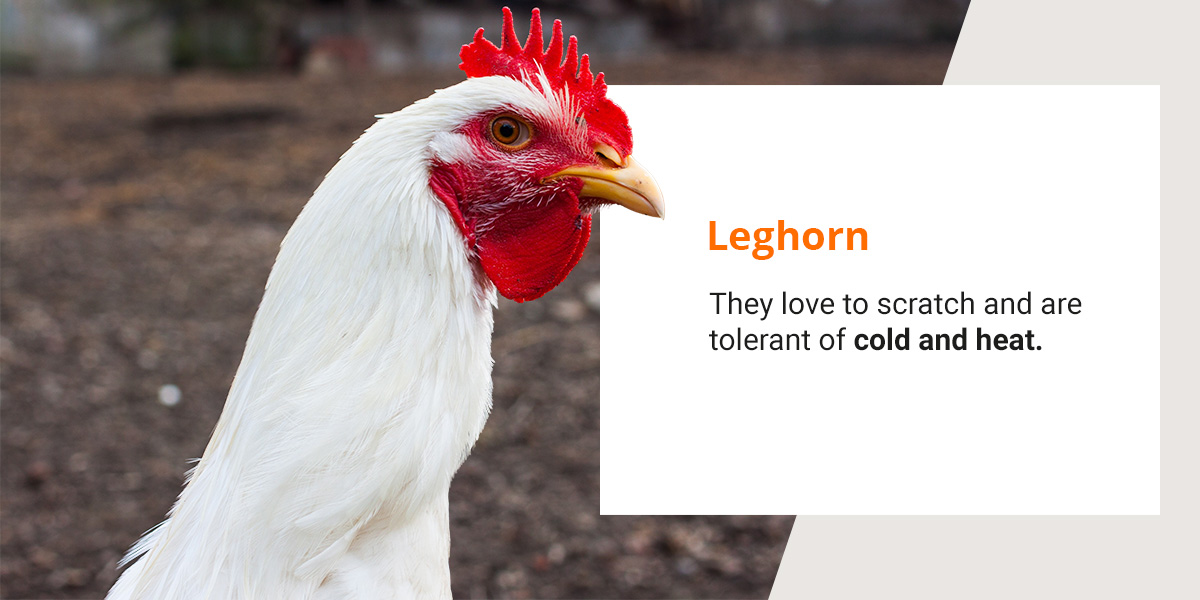
Most Popular Breeds of Chickens
Getting eggs or meat is one of the biggest benefits of raising chickens. Chickens don’t require much care and are fairly inexpensive. You have to give them fresh food and water each day, clean their coop, and collect the eggs.
If you’ve decided to raise chickens or want to expand your flock, you will want to know what the most popular chicken breeds in the U.S. are. This guide lists the best chicken breeds and basic facts and information about them.
Rhode Island Red
Rhode Island Reds have beautiful golden red plumage. They originate from Rhode Island and became the state bird in 1954. You can raise them for meat or eggs. The meat is rich in flavor and their light brown eggs are consistently produced. They can lay 200-300 eggs a year when they are at least six months of age.
This breed is popularly kept in backyard flocks or as free-range. As long as they have food and shelter, they will lay eggs. They are more tolerant of cold than other breeds and can handle temperatures below freezing. This makes them a popular choice for areas with colder winters.
ISA Brown
These chickens are known for their docile nature and egg production. ISA Browns are sweet chickens that get along well with humans. They are a great choice for families with children because they aren’t skittish. They can lay up to 300 eggs per year and begin laying eggs earlier than other breeds.
ISA Browns are low maintenance and adapt well to various climates and surroundings. This makes them one of the best chicken breeds for beginners.
Plymouth Rock
This breed is relaxed and calm. They are not in a hurry to do anything, and nothing seems to faze them, making them an excellent choice for families with children. Plymouth Rocks have beautiful plumage, usually black or dark brown with white stripes.
These chickens lay around 200 large brown eggs a year. While it isn’t as much as some breeds, it is a large number. They are easily kept in a flock because they get along well with other breeds.
Orpington
Orpington chickens might be the breed you picture when you think about chickens. They are one of the dominant chicken breeds in America. Most of them are fluffy and gold, but they can be blue, black, white, or lavender. Similar to Plymouth Rock chickens, they are friendly and lay around the same number of light brown eggs.
If you want to raise chickens for meat, Orpingtons are a dual-purpose breed. They are meaty birds with large breasts and thighs.
Silkie
These chickens are very adorable. They stand out amongst other breeds because of their poufy, fluffy plumage. Silkies are small in stature, and they are sweet and cuddly. However, Silkies don’t do well in mixed breed flocks because bossier breeds will push them around.
Leghorn

Leghorns dominate the white egg-producing industry, producing between 150 to 320 extra large white eggs a year. These chickens are spirited, adventurous, and friendly. They love to scratch and are tolerant of cold and heat.
This breed is not a good breed for beginners or families with children. Leghorns are not cuddly, and they are noisy, making them unsuitable for urban or suburban areas. They get bored easily and need plenty of space to roam.
Sussex
Sussex chickens are a large, dual-purpose breed that was known as the finest poultry in England during the Victorian age. They put on fat easily, making them perfect for the meat industry. When bred for eggs, they lay between 200 to 250 large brown eggs a year.
This breed likes to have space to roam. They tolerate cold well, but not heat. Sussexes are suitable for beginners and families with children because they are curious and friendly.
Dominique
The Dominique chicken is America’s first and oldest breed. Some believe the pilgrims brought it from England, but others think it originated in the French colony of St. Dominique. Either way, it is still a popular dual-purpose breed today.
Dominiques are medium-sized black birds with white speckles. They are mainly used in egg production because hens can lay around 230 to 275 a year. This breed is not well adapted to cold weather and prefers hot, humid climates. It is a family-friendly breeder that is easy to care for.
Delaware
Delaware chickens are a rare breed that is becoming more popular among farmers today. It is an excellent dual-purpose chicken that is low-maintenance and healthy. They are medium-sized and grow rapidly. The hens lay up to 200 jumbo light brown eggs a year.
These chickens are friendly and curious but are not cuddly. They don’t mind being confined as long as they have space to roam. Delawares can be loud, so they are not suitable if you have neighbors who mind chickens.
Jersey Giant
These birds were bred to be large. They are wide and long and grow to be an impressive size. There are black and white varieties, but the black variety is slightly larger. Due to their size, they need more space and larger roosts.
Jersey Giants are dual-purpose, but they excel in the meat industry. When raised for eggs, the hens can produce between 150 and 200 eggs a year. They can withstand cold climates, but they don’t do well with heat. These birds don’t generally fly and are calm, friendly, and cuddly. Their nature allows them to get along well with other breeds.
Australorp
Australorps are prized for their egg production. Hens lay 250 or more light brown medium or large eggs a year. They are a medium breed with close feathers. In the U.S., they are all black. Due to their color, they need plenty of shade during warmer mon,ths so they don’t overheat.
These birds are docile and sweet and get along with other breeds. They are fine in confinement as long as there is a place for them to
forage.
Buy Nature’s Best Organic Feeds
Once you have decided what breeds you want to raise, you need to choose the right feed. Nature’s Best Organic Feeds has been in business for 75 years producing organic feed. The many benefits of using organic feed include:
- Healthier flock: Sine the feed doesn’t contain chemicals, toxins or additives, your chickens will be less likely to have diet-related health issues.
- More nutrition: Omega-3 levels are higher in organic feed.
- Better taste: Its harvest is natural, so the taste is richer.
- Healthier environment: Organic feed won’t contaminate the soil or water or negatively affect other animals.
This is because organic feed isn’t grown or treated with any substances like pesticides, antibiotics, and hormones. Browse our Non-GMO Project Verified and non-medicated chicken feed today.
